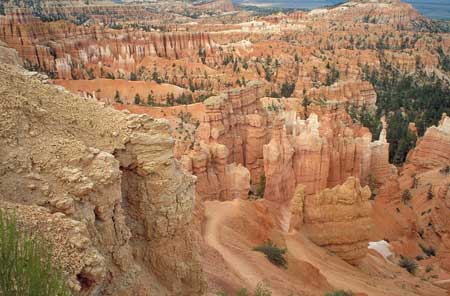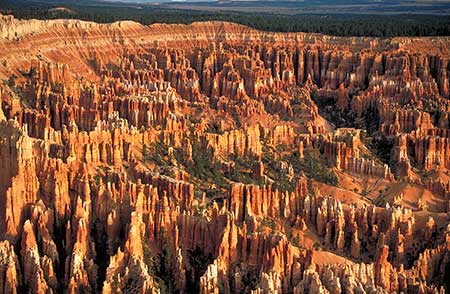You are here: Nature Science Photography – Lightness and color – Color saturation
Another key is to adapt the working method to the natural conditions. Indeed, the sun’s shallow angle of illumination in the morning and evening increases perceived or apparent color saturation by reducing surface reflections, which are 4% when the light is perpendicular to the surface and 100% when it is parallel. An additional positive effect at these moments is the removal of the attenuating blue. This short-wave part of the spectrum is scattered particularly strongly by the gas and water vapor molecules in the air. This effect intensifies in the morning and evening, as the path of light through the atmosphere becomes longer the lower the sun is. For another reason, most nature and landscape photography is best captured during the hours around sunrise and sunset. This is because the scattering of the short-wave blue spectrum just described helps the sky to become a rich, dark blue. And against such a relatively dark background, any object experiences a significant increase in its perceived (apparent) color saturation. The dark clouds accompanying a thunderstorm also exert the same effect, making even the dull green of a pine tree glow powerfully. – On the other hand, how soporific is the light blue, almost white sky at midday!


Next Polarizing filters
Main Lightness and Color
Previous Film selection
If you found this post useful and want to support the continuation of my writing without intrusive advertising, please consider supporting. Your assistance goes towards helping make the content on this website even better. If you’d like to make a one-time ‘tip’ and buy me a coffee, I have a Ko-Fi page. Your support means a lot. Thank you!


 Since I started my first website in the year 2000, I’ve written and published ten books in the German language about photographing the amazing natural wonders of the American West, the details of our visual perception and its photography-related counterparts, and tried to shed some light on the immaterial concepts of quantum and chaos. Now all this material becomes freely accessible on this dedicated English website. I hope many of you find answers and inspiration there. My books are on
Since I started my first website in the year 2000, I’ve written and published ten books in the German language about photographing the amazing natural wonders of the American West, the details of our visual perception and its photography-related counterparts, and tried to shed some light on the immaterial concepts of quantum and chaos. Now all this material becomes freely accessible on this dedicated English website. I hope many of you find answers and inspiration there. My books are on